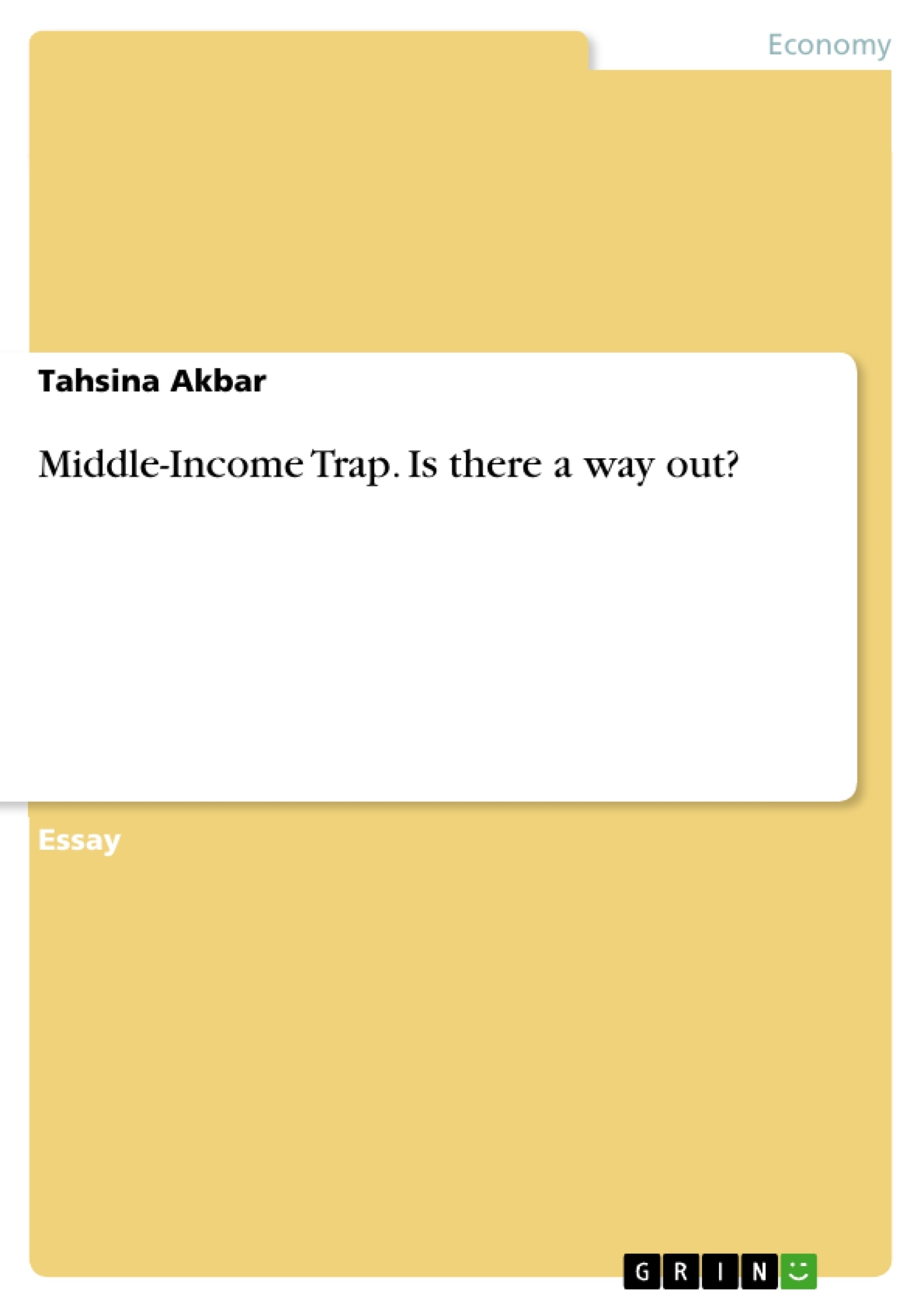Middle-income trap has become a well-known phenomenon with a large number of countries falling into the trap and getting stagnated. The article is an attempt to investigate whether falling into the Middle-income trap is inevitable or there is a way out through in-depth review of secondary research. The article argues, supported by previous empirical and descriptive evidence, that countries (and regions within) are not systematically bound to fall into a MI trap, rather, certain determinants, such as institutions, economic structure, infrastructure and other factors make countries (and regions within) more susceptible to a MI trap. It discusses how the complex economic structure of a MI country (and region within) requires a shift to capital intensive, innovation- driven efficient economy to make a timely transition to HI economy. It also highlights the need for a certain level of infrastructure to capture the benefits of an export-based economy. Moreover, decentralization, inequality and demography play significant role in intensifying the MI trap period affecting growth. Therefore, the article concludes, while some countries (and regions within) fall into a MI trap and stagnate, others do not, due to uneven condition of their determinants.
Inhaltsverzeichnis (Table of Contents)
- Middle-income Trap
- Why do some countries fall and some survive?
- Institutional Reform
- Economic Structure
- Infrastructure
- Other Factors
Zielsetzung und Themenschwerpunkte (Objectives and Key Themes)
This essay aims to analyze the factors contributing to the "Middle-income Trap" and investigate whether escaping this phenomenon is inevitable or depends on specific determinants. It examines the role of institutions, economic structure, infrastructure, and other factors in influencing a country's susceptibility to the trap.
- The Middle-income Trap: Defining the phenomenon and its impact on economic growth.
- Role of Institutions: The impact of institutional reform, particularly education, research and development, and strengthening the state, on escaping the trap.
- Economic Structure: Examining the need for a shift towards capital-intensive, innovation-driven economies to facilitate a transition to high-income status.
- Infrastructure: The crucial role of adequate infrastructure in capturing the benefits of an export-based economy and promoting growth.
- Other Factors: Analyzing the influence of decentralization, inequality, and demographics on the duration and intensity of the Middle-income Trap.
Zusammenfassung der Kapitel (Chapter Summaries)
- Middle-income Trap: This chapter defines the "Middle-income Trap" as a period of sharp deceleration in growth after a sustained period of increase. It discusses various perspectives on defining the trap and the limitations of existing measures, highlighting the importance of achieving specific growth rates to escape this trap.
- Why do some countries fall and some survive?: This chapter explores the key determinants that make countries more susceptible to the Middle-income Trap. It emphasizes the importance of institutional reform, particularly education, R&D, and strengthening the state, in addressing the challenges of increasing labor costs and maintaining competitiveness. It also discusses the need for innovation, particularly in developing indigenous technology, to achieve long-term growth and escape the trap.
- Institutional Reform: This chapter focuses specifically on the role of institutional reforms in escaping the Middle-income Trap. It examines the importance of human capital development through education, the need for a strong emphasis on R&D and innovation, and the significance of secure property rights in facilitating investment and growth. The chapter provides examples of countries like South Korea and Brazil, contrasting their approaches to these reforms and their impact on their respective economic performance.
Schlüsselwörter (Keywords)
The key terms and concepts explored in this text include the Middle-income Trap, institutional reforms, economic structure, infrastructure, education, research and development, innovation, property rights, corruption, and economic growth. The text analyzes the relationship between these factors and their impact on countries' ability to escape the Middle-income Trap.
- Citar trabajo
- Tahsina Akbar (Autor), 2017, Middle-Income Trap. Is there a way out?, Múnich, GRIN Verlag, https://www.grin.com/document/412812



